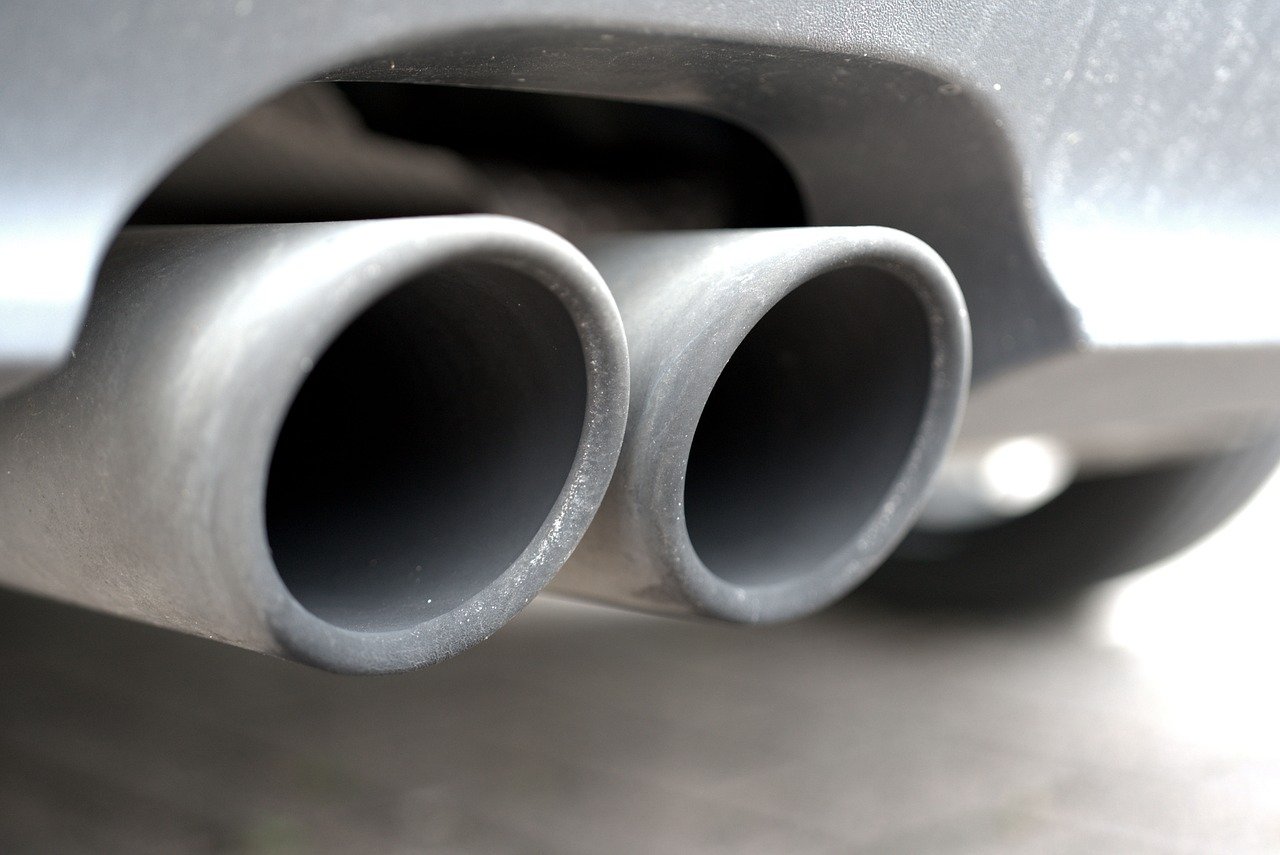Automobiles are one of the primary sources of air pollution, but government policies have put pressure on manufacturers to create engines and fuel systems that produce fewer pollutants. One of the biggest advances in controlling vehicle-related pollution was the development of the catalytic converter in 1975.
This device uses chemical reactions to convert pollutants into more benign emissions before they are released into the air. Overall, the catalytic converter is a rather simple automotive device that has made an incredible impact on reducing air pollution.
In vehicles, the fuel combustion process primarily produces carbon dioxide and water vapor. Advances in onboard computers have helped engines control fuel-to-air ratios to minimize carbon dioxide emissions. The catalytic converter focuses on some of the more harmful byproducts of combustion.
The three byproducts of combustion tackled by the catalytic converter are carbon monoxide, hydrocarbons, and nitrogen oxides. The catalytic converter uses a catalyst to trigger a chemical reaction that converts these byproducts into something different. By definition, a catalyst is not changed in a chemical reaction; catalysts are neither reactants nor products.
The catalytic converter in a vehicle has two catalysts: one that reduces and another that oxidizes. Both of these catalysts are a ceramic structure coated with a type of metal, which could be platinum, palladium, or rhodium. The structure is designed to expose the maximum amount of surface area of the catalyst to the stream of exhaust, while requiring the least amount of catalyst, since these metals can be quite expensive.
The Three Stages of the Modern Catalytic Converter
Modern cars usually have a three-way catalytic converter, which refers to the three different types of emissions they convert. The first stage is the reduction reaction. The platinum or rhodium reduces nitrogen oxides to nitrogen gas and oxygen, both of which are normal components of air.
The second stage is the oxidation reaction. This reaction burns (oxidizes) hydrocarbons and carbon monoxide with the help of the metal catalyst. The resulting product is carbon dioxide. While carbon dioxide is a major contributor to global warming, it is less toxic to humans and less dangerous to the immediate environment than the carbon monoxide consumed by the reaction.
The third stage of the catalytic converter involves a control system that monitors what is released through the exhaust system. This information feeds back to the fuel injection system, which in turn adjusts the fuel-to-air ratio to achieve an appropriate balance based on how the engine is running. This control system monitors the amount of oxygen in the exhaust to ensure that there is enough to fuel the oxidization reaction in the catalytic converter. This continuous loop of information means that the onboard computer is constantly making small changes to minimize the engine’s emissions.
Some of the Issues Caused by Using Catalytic Converters
While catalytic converters do an excellent job of reducing the harmful gasses produced by automobiles, the technology still has some problems. One of the issues is that reduction and oxidation reactions only occur at high temperatures, so the catalytic converter does very little in the way of reducing emissions after a cold start because it takes time for the catalysts to warm up.
One proposed solution for this problem is to move the catalytic converter closer to the engine, so the hotter exhaust could reach it and the metals would heat up faster. However, exposing the converter to temperatures this high would limit its lifespan, and replacing this part can be expensive. Most automakers position the catalytic converter under the front passenger seat to protect the metals, but at the cost of reducing conversion rates.
Another solution is preheating the catalytic converter, but the 12-volt batteries in most cars would take several minutes to heat the metal to the appropriate temperature. Most drivers are not willing to wait that long to begin driving. Interestingly, hybrid vehicles have much larger batters that can heat the catalytic converter quite quickly, which further reduces the emissions from these vehicles.
Diesel engines present a different challenge because they take longer than gasoline engines to heat the catalytic converter. However, some automotive engineers have created an effective solution for this issue. The solution involves injecting urea into the exhaust pipe before the catalytic converter. The urea evaporates and mixes with the exhaust to create a chemical reaction that reduces the nitrogen oxides. This reaction produces nitrogen gas and water vapor and effectively eliminates more than 90 percent of nitrogen oxides in diesel exhaust.
Other Potential Applications of Catalytic Converters
The modern catalytic converter is so effective at reducing harmful emissions that some lawmakers are pushing to require them on machines with smaller engines, especially lawn mowers. Currently, lawn mowers produce more than 90 times more smog-forming emissions than cars because they lack catalytic converters.
However, some lawn mower manufacturers have concerns, especially in terms of the heat that would be produced by adding a catalytic converter. According to these manufacturers, the additional heat could make the lawn mower more dangerous to operate. On the other hand, requiring catalytic converters in lawn mowers would reduce emissions by the equivalent of 800,000 cars per day in California alone.
